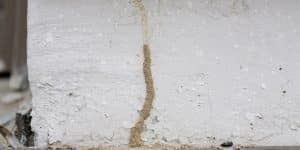Moisture plays a significant role in the world of termites. These destructive pests are attracted to environments where moisture levels are conducive to their survival and thriving. In this blog post, we’ll explore the relationship between moisture and termite infestations, helping you understand how controlling moisture can be a vital part of termite prevention.
Contents
Introduction
Hello, homeowners! Termites are notorious for causing structural damage to homes, but what many people don’t realize is that moisture is often a contributing factor. In this blog post, we’ll delve into the role of moisture in termite infestations and how you can take proactive measures to control it.
Why Do Termites Love Moisture?
Termites are highly sensitive to moisture levels. They are drawn to areas with consistent moisture because:
- Survival: Termites require moisture to survive. They can quickly dehydrate and die in dry conditions.
- Nesting: Moist soil provides an ideal environment for termites to establish their colonies. It offers protection from predators and helps maintain the necessary humidity for termite survival.
- Wood Consumption: Termites feed on cellulose-based materials, like wood. Moist wood is easier for them to digest, making it an attractive food source.
- Travel: Termites build mud tubes to travel between their nests and food sources. These tubes require moisture to stay intact.
Signs of Excessive Moisture
Identifying signs of excessive moisture around your home is crucial for termite prevention. Look out for:
- Water Leaks: Check for plumbing leaks, roof leaks, or any other sources of water intrusion.
- Condensation: Excessive condensation on windows, walls, or pipes can indicate high indoor humidity levels.
- Poor Drainage: Ensure that your property has proper drainage to prevent water accumulation around your foundation.
- Wood Rot: Rotting or decaying wood is often a sign of prolonged moisture exposure.
Moisture Control for Termite Prevention
Controlling moisture is a key element in preventing termite infestations. Here are some steps you can take:
- Fix Leaks: Promptly repair any water leaks in your home, including plumbing, roofing, or gutters.
- Improve Ventilation: Proper ventilation in your home helps reduce indoor humidity levels.
- Address Drainage Issues: Ensure that water drains away from your home’s foundation and doesn’t pool near it.
- Maintain Crawl Spaces: If your home has crawl spaces, ensure they are properly ventilated and have moisture barriers in place.
- Wood Treatment: Consider using treated wood for construction and landscaping projects.
- Regular Inspections: Schedule regular termite inspections, especially in areas prone to moisture problems.
Conclusion
Moisture is a significant factor in termite infestations, as it creates an attractive environment for these destructive pests. By understanding the connection between moisture and termites and taking proactive measures to control it, you can reduce the risk of termite damage to your home. If you have concerns about termite prevention or suspect termite activity, contact a professional pest control company like Arizona Termite Control Company at 480-660-3093 or visit arizonatermitecontrol.org for expert guidance and termite prevention services.




